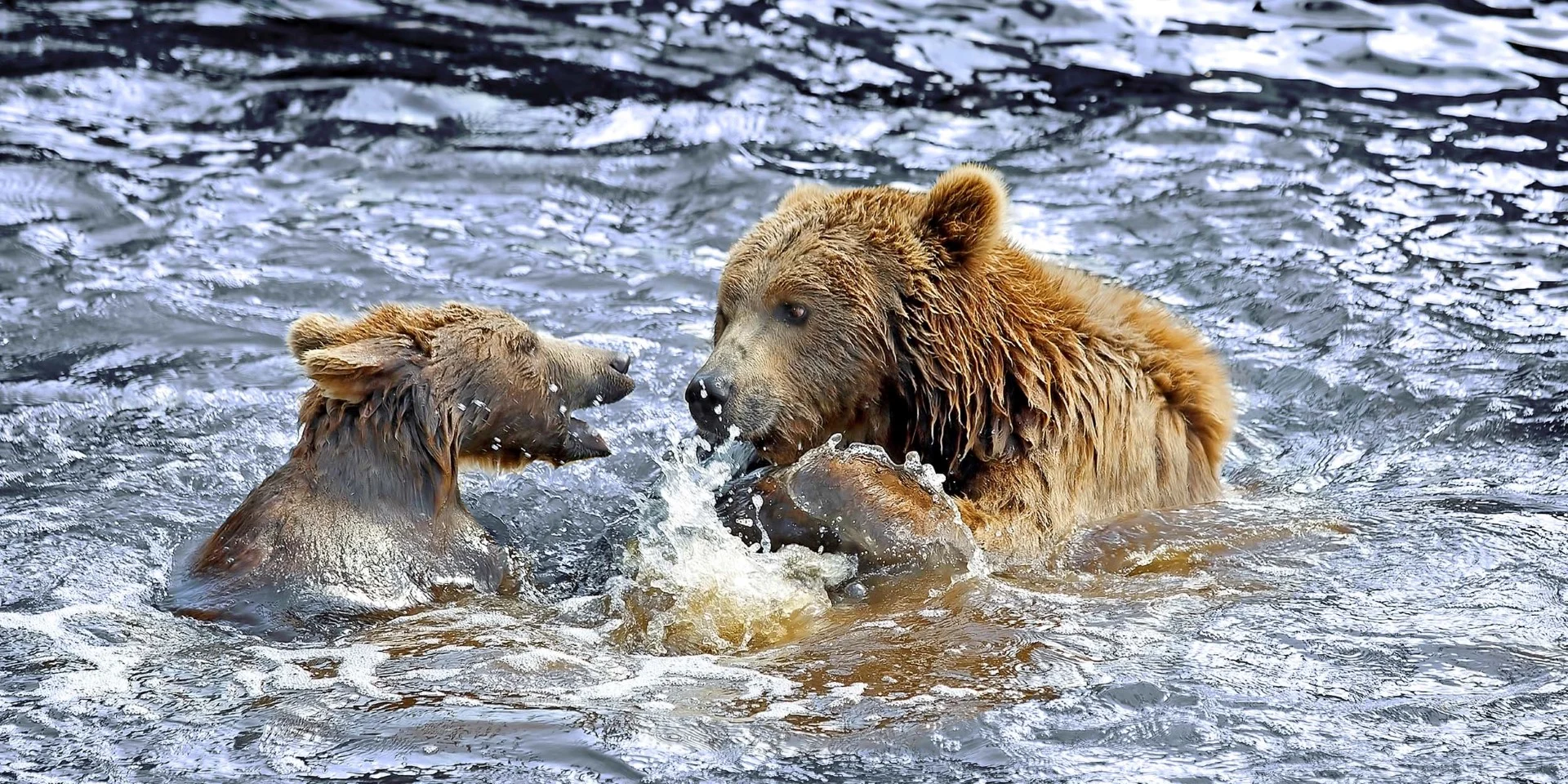Wildlife in Alaska
With towering mountain ranges, deep fjords and vast forests, Alaska offers a diverse landscape that caters to an impressive variety of wildlife.
4 mins read
Apex predators of Alaska
With an estimated 30,000 bears, Alaska is home to the vast majority of America’s brown and grizzly bears. These hulking omnivores can grow up to 10 feet tall when standing and feed mostly on berries, fish and small mammals. Besides nursing mothers and their cubs, they’re usually solitary, but don’t be surprised if you see groups of bears gathered together for a feast during the salmon run. Even more common than brown bears, black bears also roam the wilderness. They’re great climbers, so you might even see these bears relaxing in tree branches overhead. Despite their name, their fur can range in colour from black to grey to cinnamon brown. Some are even white, like the polar bears that live among the glaciers further north.
Coastal creatures
In the varied landscapes of Alaska live three species of deer, easily identified by their majestic antlers. Look out for the stocky figure of a Sitka black-tailed deer in the coastal rainforests in the southeast, and spot moose in the northern forests and caribou in the tundra.
Seasonal fashionistas
Arctic foxes live in the tundra and treeless coastal areas. Standing at around two feet, their stocky build and thick coat and tail prevent heat loss during the frigid winters. These little omnivores eat almost anything they can find, including carcasses left over from larger predators. The Arctic fox is often pictured with its distinctive coat of long, white fur, which serves as a convincing camouflage in a winter scene. However, with less frequent snow in the warmer months, white fur would make them dangerously obvious to their predators, so every spring these foxes undergo a fascinating transformation. They shed their winter coat in favour of a shorter coat of brown or grey fur to match the rocks and plants of the summer tundra.
A spectacular seascape
The cold waters of Alaska are home to seven whale species: beluga, humpback, grey, bowhead, blue, right and minke whales. The largest dolphin species, the orca, also known by the misnomer ‘killer whale’, can also be seen here. Orcas have been known to prey on some whale species, which inspired whalers to give them the title “killer of whales”. This morphed into “killer whales” over time, causing these striking black and white marine predators to be ironically mistaken for their own prey. Keep an eye on the sea to catch sight of one of these aquatic giants breaching out of the water to take a breath.
An unexpected home
Dry land is the typical home for mammals with legs, so the sea otter’s habitat surprises many. With webbed feet, waterproof fur and excellent eyesight, they are well adapted to live exclusively in water, and are most often seen floating on their backs on the sea surface. Sea otters eat, sleep and even give birth in the water, and they have to keep their fur meticulously clean so it can stay water-resistant. Closer to the coast, look out for sea otters floating on their backs in the shallow waters. This member of the weasel family spends most of its life on the water and feeds primarily on shellfish, smashing them against rocks to break them open. Seeing a pair of sea otters holding hands while taking a snooze or a mother clutching her pup to her chest might just melt your heart.
Bountiful birdlife
The diverse birdlife found in Alaska make it a dream destination for birders. Two similar species, the bald eagle and the golden eagle, are easily told apart by their different habitats. You’ll find golden eagles mainly above open ground, while the solitary bald eagle prefers to nest around rivers and fjords. As you explore the landscape, listen out for the honk of Trumpeter Swans in the water and the buzz of the Rufous Hummingbird as it hovers among the flora. To the naked eye, the wings of this tiny bird are just a blur, beating at around 75 beats per second. This is what produces the distinctive “humming” sound from which its name is derived.
